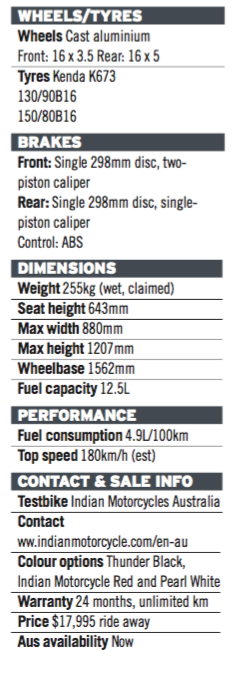If the modern retro is where it’s at, then surely the latest Indian Scout is as good as it gets
The latest motorcycle released from America’s first motorcycle company is, by definition, the most modern of the most retro and therefore could be classed as the most modern-retro of them all. It probably won’t though – its cruiser stance is a little bit too low-cut bootleg in this era of the high-waisted skinny-leg. But if you’re willing to turn a blind eye to the hipster-nista faux pa, in terms of heritage, price and performance, Indian’s Scout Sixty is one of the sharpest bikes on the market right now.
Charles B Franklin designed the very first Scout, which made its debut some 96 years ago and arguably became the American brand’s most successful and important model. Franklin was born in Ireland and worked as a designer, an engineer, and a racer. He was a genius at all three. He raced the Isle of Man TT seven times, had a best finish of second place and, during his time in America as Indian’s chief engineer the firm had one goal: to match and defeat that rapidly growing upstart called Harley-Davidson.
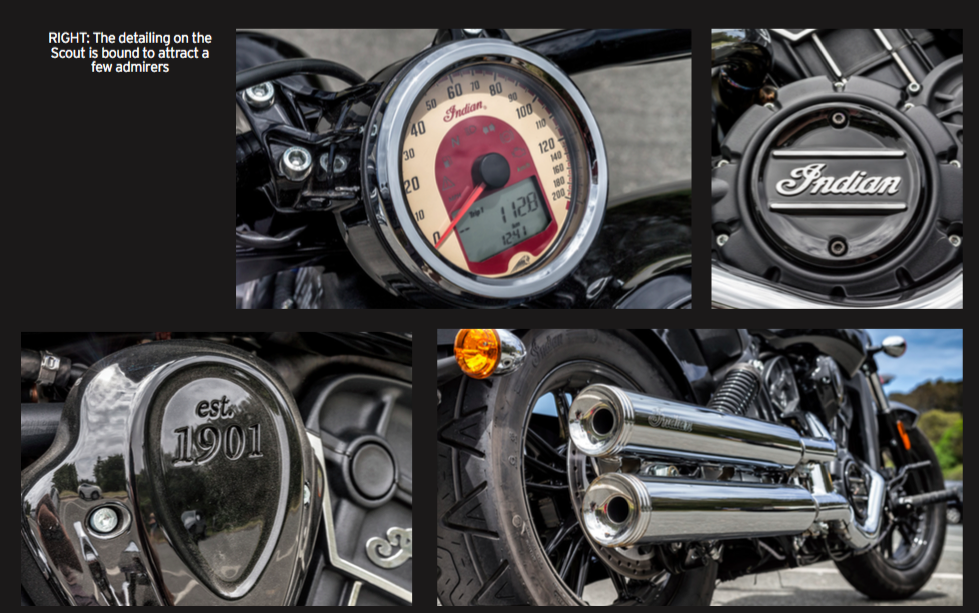
Almost a century later and things haven’t changed that much. Sure, Indian had a 50-odd year hiatus while Harley-Davidson happily bubbled away, but Polaris Industries’ acquisition and relaunch of the old American brand mimicked the heydays of Franklin’s designs; it wanted to nab a bigger piece of the American cruiser pie.
Enter the Scout Sixty. The second model in the modern-day Scout line-up, it is visually identical to the firm’s first and rather successful 1133cc Scout. Cleverly, the significant differences between the pair are two things you can’t see: power and price. The reduction in both is why the Scout Sixty looks set to be a sales success.
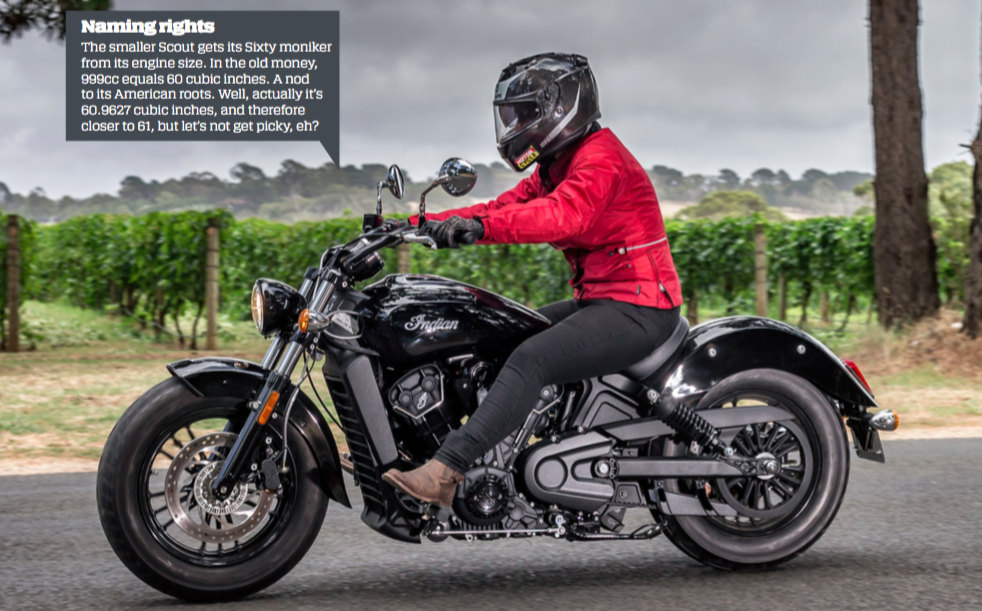
You see, the Sixty is to the original Scout what the Harley-Davidson Iron 883 Sportster is to the large-capacity 1200 variant. The fact that the smaller of the two H-Ds finished 2015 as Australia’s seventh most popular cruiser while the 1200 didn’t even crack the top 10 is instructive. More and more consumers are demanding a realistic compromise between price and performance, and the Scout Sixty is exactly that.
The reduction in cubes and therefore price achieves a lot more than you might think. Firstly, it gives Indian a more approachable offering. Even though its physical dimensions are exactly the same as the bigger 1133cc Scout, and in cruiser terms the output figures are really neither here nor there, simply coming in under the 1000cc ceiling Indian has made the Sixty a viable option for new or returning riders who would have otherwise dismissed the Scout.
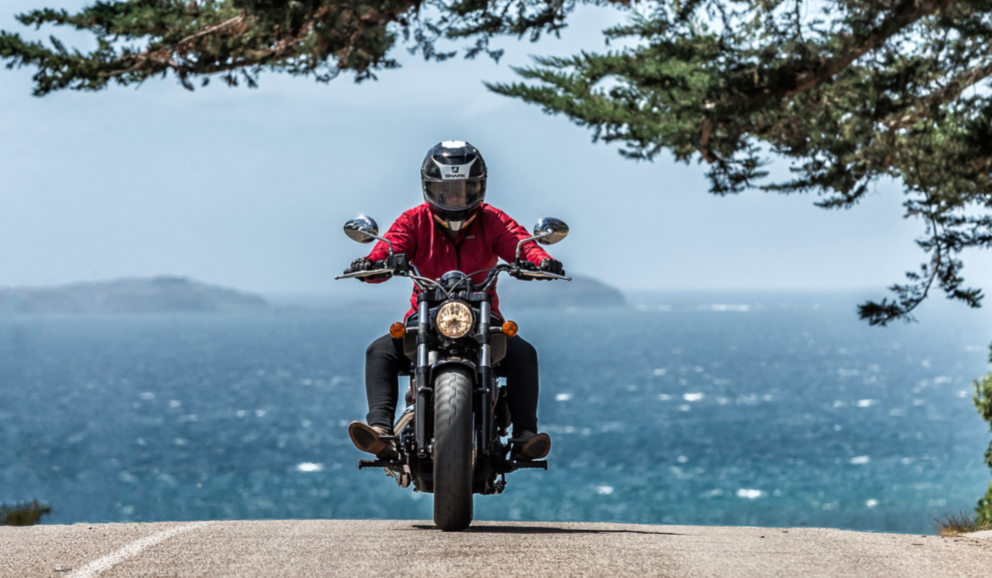
We all realise how important it is for a brand to capture an audience early – and what a significant role perception plays in rider confidence. If Indian can offer what it knows to be a superb-handling motorcycle (more on that later) without the overtly intimidating bits (like big capacity and price tag), then with very little effort it has greatly widened its target market. It’s also an attractive offering for the experienced rider. And a person who doesn’t feel they need the extra cubes for the extra clams can ride away on an enormously capable and, let’s face it, coveted American-made cruiser for $17,995. What’s more, unless you ride the two variants back to back, you’re not going to miss the output – which is different to saying you won’t notice it.
The high-revving engine of both variants is delightfully addictive. Proving how happy the 999cc engine is to spin, peak torque chimes in at 8500rpm, which is unusually high for a V-twin cruiser. The Sixty’s all-important torque peaks at 89Nm (the same as Ducati’s 821cc Hypermotard) compared to the 1133cc Scout’s 97Nm. It’s a similar story for the power output, which peaks at 58kW compared to 74kW, but believe me when I say it matters little in the real world.
Both engines have the same stroke length – reduction in capacity is the result of a smaller bore. The Scout Sixty, however, has a slightly higher compression ratio (11.1:1 compared to 10.7:1) and probably also slightly greater heft with some of the extra 1.8kg attributed to the thicker-walled cylinders.
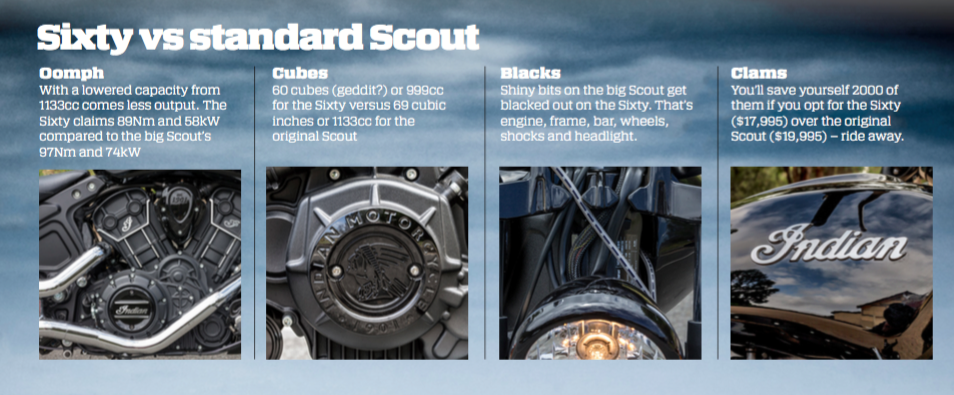
The Sixty uses a five-speed gearbox, instead of the bigger Scout’s six, but Indian has removed fifth gear, not top gear, to give riders a better spread of ratios. I did fumble once or twice for the phantom sixth, but I find myself doing that on most five-speeders more out of habit than necessity. Speaking of the gearbox, it’s gorgeous. It’s one of the more memorably smooth and easy to use boxes I’ve tested in recent times. Neutral is a dream to find and actuation is positive and clunk free. Are you listening, Harley-Davidson?
Other than that, the only other differences between the two Scouts are the colours and badges – and this comes back to perception. Where the bigger model is all chrome and showy with the Scout moniker proudly adorning the tank, the smaller version goes all dark and mysterious. That’s especially so on the Thunder Black variant I tested.
The engine, frame, bars, headlight surround, rear shocks, wheels and seat are all blacked out on the Sixty, which I reckon results in a tougher looking bike than the big one. Some might call it little-person syndrome, but I think it’s yet another smart move by Indian. Ride away on a bike with equally engaging performance and which looks just as good – some will think better – and pocket the $2000 difference. Or spend it.
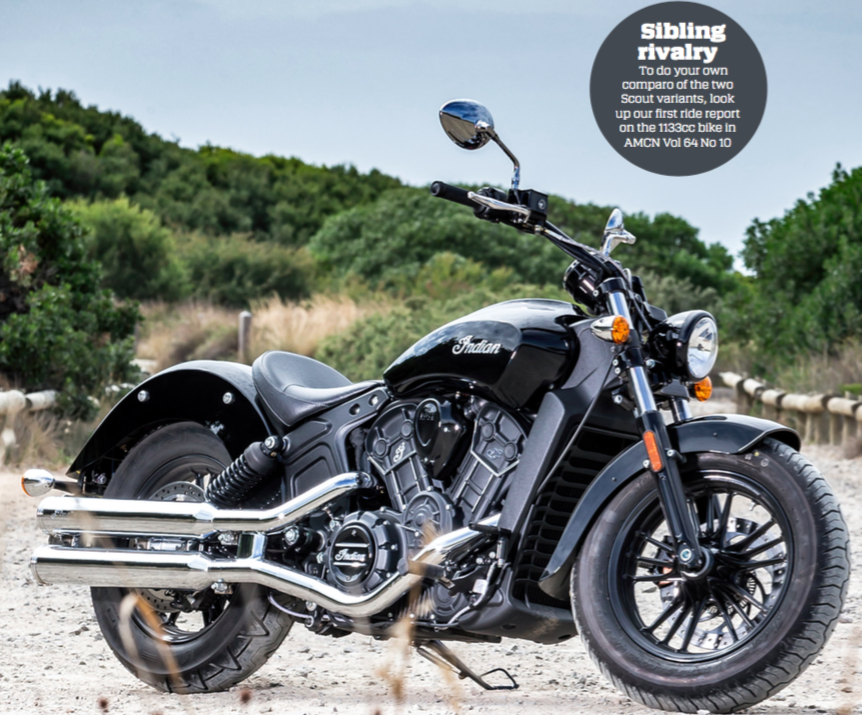
My test bike was fitted with the Stage One kit which includes better-sounding exhausts. They still tick all the boxes in terms of noise and emissions (which begs the question: why doesn’t Indian fit them as standard?) and they look the goods. In fact, the range of available accessories is enormous because the Sixty shares, well, everything with the original Scout, and its accessory catalogue is vast. The addition of a rear rack and leather panniers would turn the Scout Sixty from an across-town cruiser into a capable tourer.
Even the smallest or least-experienced riders could confidently load up the Sixty with luggage and follow the sunset. The handling is extremely light and intuitive and the incredibly low seat height (643mm) takes any of the stresses, or perceived stresses, out of long-distance touring. Or, for that matter, across-town cruising.
There’s enough ground clearance to entice you to always want take the twisty back-roads route, and while it’s true the rear shocks might occasionally groan under touring loads, there’s always that vast accessory catalogue to smooth out the bumps. The ABS-equipped brakes are spot-on, the single caliper up front fed by braided steel lines is more than capable, and the rear brake is probably the strongest I’ve ever experienced on any cruiser. The 12.5-litre tank isn’t cavernous but, taking it easy, the Sixty will be ready for a drink at probably about the same time you will.
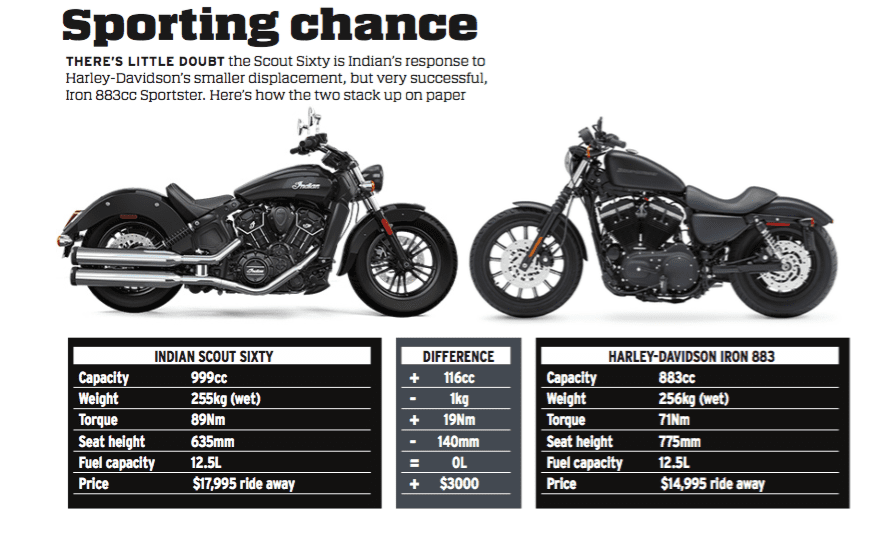
Making the notion of saddling up your Scout and rolling out of town even more attractive is the bike’s adjustable ergonomics. Indian took a leaf out of Harley-Davidson’s book to offer a range of handlebars and footrest positions that will allow owners to customise their Scout to their physical needs. Which makes really good sense. When was the last time you jumped in a new or unfamiliar car and left the seating or steering-wheel positions where you found them?
For nigh-on 18 grand, Indian’s Scout Sixty is an awful lot of motorcycle. And it’s examples like this one which have shot Indian to the top of the class of a long list of recently relaunched brands. It’s the perfect mix of modern and retro, it achieves everything it promises it will with great capability, and does it differently enough to its competitors that it’ll go a long long way in securing Indian a big old piece of that American cruiser pie.
It’s a bike Charles B Franklin would most certainly approve of.

